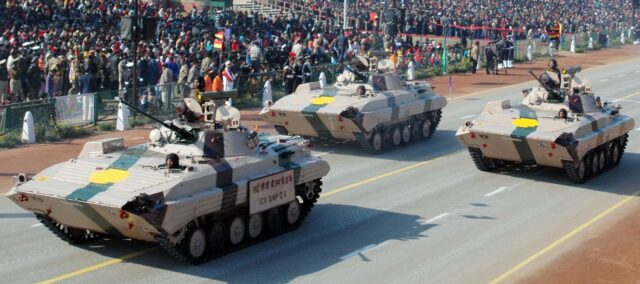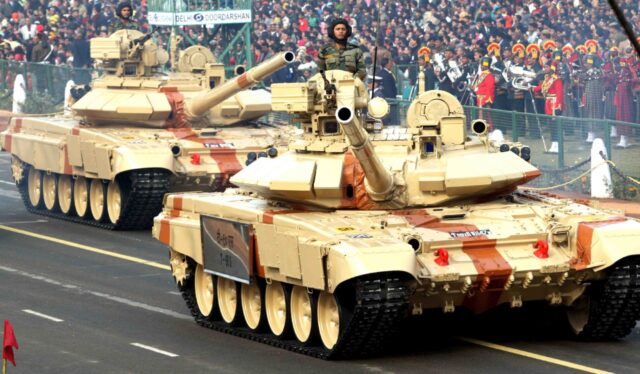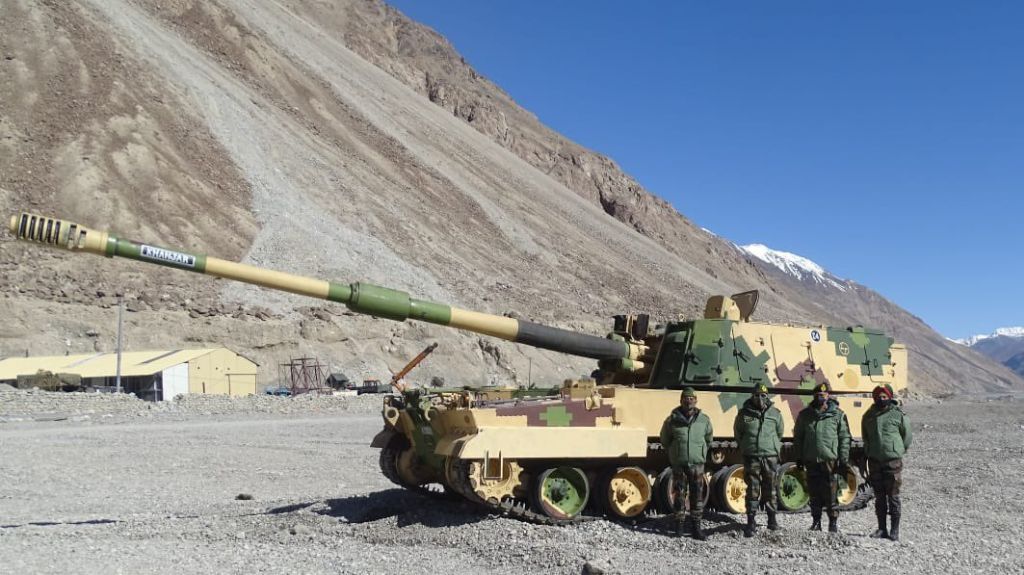According to Janes, Indian military command has initiated the formation of new tactical compounds known as Integrated Battle Groups (IBGs) along the borders with China and Pakistan. The Western Command, which is on average alert for conventional warfare with Pakistan, conducted one IBG exercise in the border area. In the maneuvers, which took place on October 12, the 11th Corps “Vajra” (equipped with T-90 MBTs and BMP-2 infantry fighting vehicles among others), together with a squadron of combat helicopters, demonstrated the potential of the newly created tactical compound and the effectiveness of the latest improvements in weapons and equipment.
For safety reasons, the exact location of the exercise has not been made public. These exercises were only a prelude to the larger maneuvers that will take place in October. Chandigarh Air Base personnel are preparing for them. The creation of IBG is therefore checked on an ongoing basis in practice during maneuvers in the field.
During the last two years, special preparations have been made to increase the level of combat readiness of soldiers, including the ability to operate in winter. Special winter clothing was also delivered to the sub-units, temporary barracks and small housing estates for soldiers and families were built, and the number of hospitals was increased. The living conditions of the soldiers were better, so that the service in the temperature of –50 degrees Celsius was a bit less burdensome.
In the second half of September, soldiers from the 9th “Rising Star” Corps on the western border with Pakistan and the 17th Shock Corps on the northern border between India and China performed similar exercises. Recently, Indian land forces have conducted exercises in high mountain areas in eastern Ladakh near the Line of Effective Control. Similar exercises, code-named “Singhee Prahaar”, were conducted by soldiers of the 33rd Triszakti Corps and the 27th Mountain Division “Attacking Lion” in the northern part of the state of Sikkim.
No Battlefield Too High! #CenturyBrigade #StrikingLionDivision #TrishaktiCorps conducted integrated tactical Exercise SINGHEE PRAHAAR at 17,500 feet in North #Sikkim, showcased prowess of #IndianArmy in integrated operations in Super High Altitude Area. @ Adgpi @easterncomd pic.twitter.com/wQvt9F7Vitter.com
– Trishakticorps_IA (@trishakticorps) October 9, 2022
The exercises – going up to 5,300 meters – were necessary in order to practice the IBG tactics. They included the cooperation of mechanized infantry, artillery, unmanned aerial vehicles and anti-tank guided missile teams.
The creation of integrated battle groups was announced in 2019. The first was to be ready at the beginning of this year, but Indian progress was slowed down by the death of General Bipin Rawat, chief of the Defense Staff, the high command of the armed forces. He died in the Mi-17W-5 helicopter crash on December 8, 2021.
At that time, scheduled meetings were canceled, during which the details of the structure and principles of IBG functioning were to be discussed. At that time, there were differences between the types of armed forces on the shape of future tactical relationships. Over time, they were overcome, which allowed for the further formation of structures.

Indian BMP-2K on a parade.
(Press Information Bureau / Ministry of Defense, Government of India)
Each Integrated Combat Group will ultimately count about 5,000 soldiers and will be placed between a brigade (about 3,000) and a division (12,000). It will be established at each headquarters of the theater of military operations. It will consist of five or six battalions. The number of 5,000 is indicative and it may turn out that the needs will require the maintenance of as many as 8,000 soldiers.
IBG will have one mixed mechanized brigade, which will include Main Battle Tanks and Light Tanks. The latter are to face the Chinese in mountainous conditions, for example in Ladakh. IBG fighting Pakistan – due to the different terrain – could have more MBTs and heavy artillery. Thus, the structure of each of the tactical associations will differ. They will be united by the principle of creating according to the pattern “threat, task, terrain”.

T-90S Bhishma tanks.
(Dipak Das / Ministry of Defense, Government of India)
The groups will consist of infantry, artillery (self-propelled and towed), armored, anti-aircraft and auxiliary units, including unmanned aerial vehicles (with particular emphasis on circulating ammunition). The idea is to make the newly created IBGs more flexible and easier to use depending on the task at hand. Infantry assigned to offensive units will have armored personnel carriers and infantry fighting vehicles. It is worth recalling that the land forces want to acquire 198 wheeled armored vehicles in the 8 × 8 configuration and modernize the 811 BMP-2 Sarath, including the BMP-2K command vehicles.
New Delhi estimates that a minimum of six battle groups are needed for defensive and offensive missions as first-line forces. In the event of a major offensive – understood as a full-scale conflict with one of the opponents – a reserve of six additional tactical connections would be required.

BMP-2 and FH77 howitzers of the Indian 31st Panzer Division.
(mil.ru)
IBG will be placed under the command of an officer with the rank of Major General, and the whole will be directly subordinated to the command of the corps. If all goes according to plan, the division headquarters, which operates within the corps, will be liquidated and one complete layer will be removed from the organizational structure. It is estimated that more flexible tactical relationships and the command structure will ensure the combat readiness of individual battle groups within twelve to forty-eight hours from the announcement of mobilization. The idea is to get them in the front line as soon as possible.
In order to reach the roots of the plans to establish IBG, it is necessary to return to operation “Parakaram” at the turn of 2001–2002, during the conflict with Pakistan. Mobilization and preparation for the war took three weeks. Since then, there have been discussions about creating relationships that will not be inert in time and space. Over the years, there was no will to implement the plans.
It was only seriously started in 2018, when the idea was formally conceptualized. Merit in this field was made by General Rawat. The concept was first tested on plains and high altitudes in 2019. It was expected that the IBG would be gradually created from 2020. The two-year delay was mainly attributed to organizational inertia. The crisis in eastern Ladakh and the ongoing arms race, as well as the increased risk of a war with the People’s Republic of China, significantly accelerated the process.
See also: The Future of Air Warfare According to Lockheed Martin
Sigma147, CC BY-SA 4.0

